Nigel Lawson tribute: Braunston Marina director shares his memories of Thatcher's chancellor
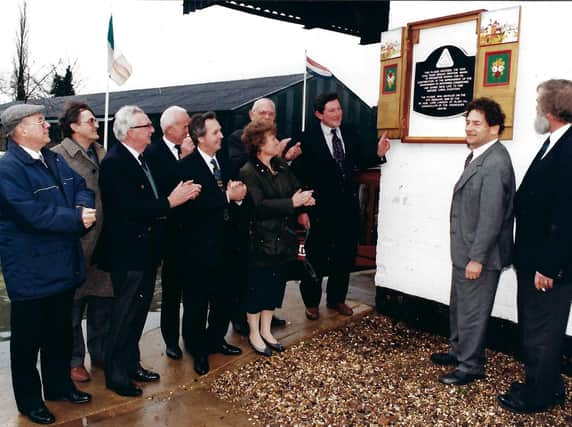

Braunston Marina director Tim Coghlan recalls his encounters with Nigel Lawson in this special feature.
As Chancellor of the Exchequert, Lawson introduced in his 1986 Budget the Business Expansion Scheme, which opened the door for Tim and his associates to acquire Braunston Marina in 1988.
Advertisement
Hide AdAdvertisement
Hide AdLawson later became a neighbour and friend to Tim during his first five years in retirement from politics (1992-7), when he lived in rural Northamptonshire and visited to Braunston Marina.
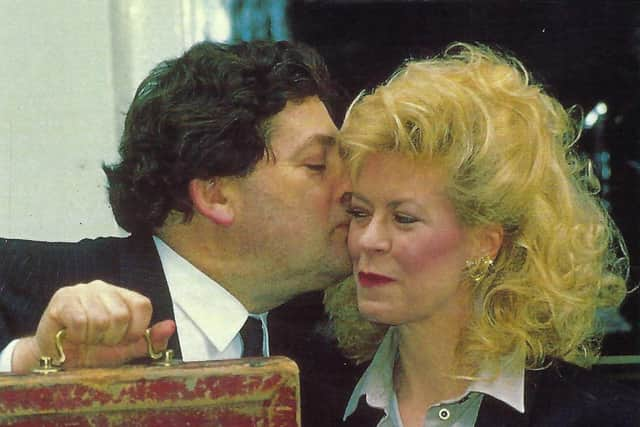

Tim said: “My pre-Braunston Marina working life (1969-88) was almost entirely spent working in the City of London - in accountancy and then financial services. It meant that I was able to witness at first hand the great upheavals that were caused to unreformed City institutions, by Margaret Thatcher’s government after it came to power in 1979. First as her Financial Secretary to the Treasury, and from 1982 as her Chancellor, Nigel Lawson was the man who inspired and drove these reforms, overturning restrictive practices which had been in place, in some cases for generations.
The consequences were massive, not least to those who worked in those institutions and in particular to the likes of myself, who were no longer in their first flush of youth.
But Lawson was also determined to create an enterprise economy, and to encourage it. In particular in 1986, he set up the Business Expansion Scheme (BES). This was intended to help finance new businesses, and was very attractive to non-working investors at a time when the top rate of tax was still 60%. Those investors could claim full tax relief for their investments, and if the scheme worked – alas most failed – they could sell their shares free of Capital Gains Tax.
Advertisement
Hide AdAdvertisement
Hide AdThis was a lifeline for me, as I had always wanted to have my own business, and buying one, backed by BES, would be the way to finance it.
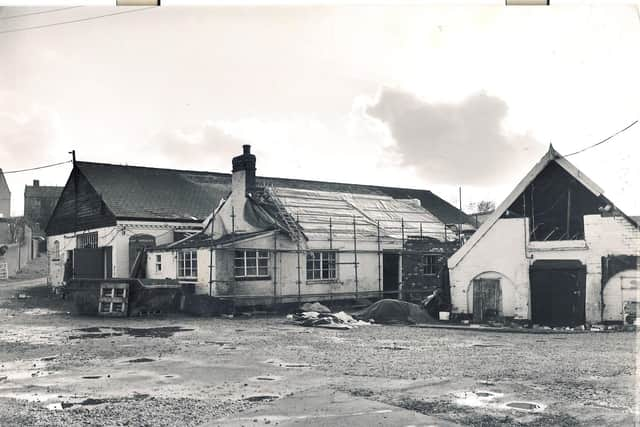

After the collapse of stock markets across the globe on Black Monday - the 19th October, 1987, I was determined to look for that business to buy. In May 1988 I was attracted to Braunston Marina which was advertised in the Financial Time, as ‘in receivership’. Thanks to help from a small City firm of accountants I knew who speciliased in the likes of BES, they were able to obtain HM Revenue approval for the purcahse, and with my own modest funds from the sale of my Surrey house, I was then able to raise the rest of the money from City friends. We were finally able to buy the business with me as the major shareholder and managing director on the 25th October,
1988.
Early days were tough, but with drive, determination and not a little bit of luck, we survived, and later were able to prosper. I have always felt a very special debt of thanks to Lawson.
Away from the backwaters of Braunston Marina, where I was now firmly at the helm, events moved on on the greater political stage, with Thatcher and Lawson increasingly at loggerheads over the EU / ERM, and other matters. She now mistrusted him, and had her own financial guru in the form of Alan Walters, who had her ear.
Advertisement
Hide AdAdvertisement
Hide Ad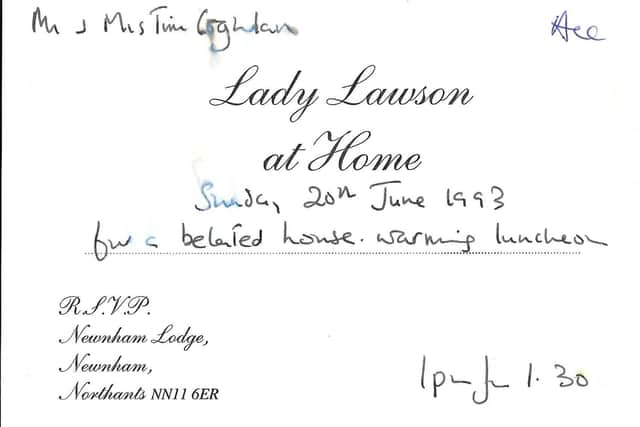

Ironically almost the year to the day we had bought Braunston Marina, Nigel Lawson threw in the towel and resigned from Thatcher’s government, retiring to the backbenches. With his disillusionment with John Major’s government, Lawson decided not to stand at the 1992 election, and retired from Parliament altogether. He had been Member for Bladby near Leicester since 1974. He sold his old vicarage in the constituency and bought an extended old farmhouse outside the village of Newnham, Northamptonshire.
This looked across the Upper Nene valley and directly at my house about a mile away. Our houses were of similar ilk - to the extent of both incorporating ‘Lodge’ in their names.
My financial inspiration was getting closer, and I became curious to meet him.
Lawson’s house came to him with some controversy. The previous owner had once had a successful business in the motor racing trade, moving F1 cars across Europe to Grand Prix events.
Advertisement
Hide AdAdvertisement
Hide Ad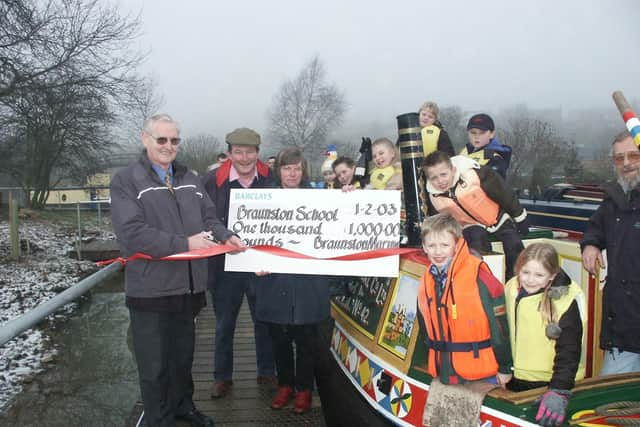

But in the 1992 economic downturn – John Major’s famous ‘If it’s not hurting, it’s not working’
– the man’s business had got into trouble and its bankers Barclays had called in the receivers. Lawson was then a non-exec director of Barclays, and his buying the house from the receivers, made the national press.
Although we were now near-neighbours, I had no immediate contact with him, mainly because he was still hard at work completing his political memoirs, a massive tome which he had already been working on in the years after he had resigned from Thatcher’s government. Amazingly I later learnt from him, he had written it by hand in pencil in a series of children’s school exercise books, his office being the relevant kitchen table wherever. The high priest of high-tech investment, former editor of The Spectator, City Editor of the Sunday Telegraph and more, had never owned a word processor, and let alone could use a two-finger typewriter!
Towards the end of 1992, Lawson’s massive tome, ‘The View from No. 11’ was published in time for the Christmas trade. I was then a committee member of the Daventry Business Association, and we met monthly under the chairmanship of Peter Aegenheister, the then editor of the weekly Daventry Express. Aegenheister was skilled at producing interesting speakers, which had included Enoch Powell and Sandy Gall.
Advertisement
Hide AdAdvertisement
Hide AdThe normal attendances at these lunches at the Daventry Working Men’s Club, were between twenty and thirty. However, once Lawson had agreed to come and talk - and also sign pre-purchased copies of his new book - the cat was out of the bag.
In no time we had applications for well over a hundred tickets, and it was agreed to move
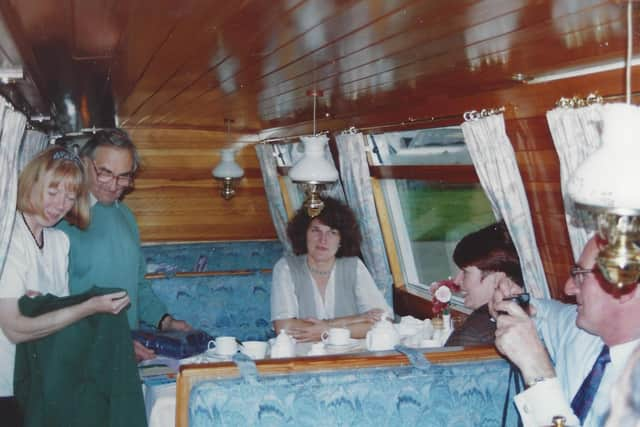

the meeting to the large new-ish Resort Hotel at the edge of Daventry, that had major conference facilities.
The programme was to meet, the presentation to begin 12.00. Lawson would speak for half an hour, take questions and then sign copies of his books. A buffet lunch would follow.
Advertisement
Hide AdAdvertisement
Hide AdBut at 12pm, there was no sign of him. At 12.30pm, the hotel reception received a call from him giving his apologies and saying he was running late. But he would be with us by pm. At 1pm, there was another call saying he would be with is by 1.30pm, and we should start lunch.
At 1.30pm, Lawson finally arrived, full of unexplained apologies, and we went straight into his presentation. By then most of the attendees had left unamused. But there were enough left to enjoy his excellent ad-lib presentation, in which he said it was still too early to see whether the measures he had put in place were working.
Under questions, he admitted that Thatcher had once told him: “I want you in my Cabinet, but you must get a haircut”.
After the presentation, only a handful of the committee members remained, including Aegenheister and myself. Food for that small group was somehow produced, and having earlier learnt of Lawson’s liking for good claret, a couple of the hotel’s best bottles were produced, one of which I recall was almost entirely drunk by him. Aegenheister sat on one side of Lawson, and on Aegnehesiter’s insistence - in view of my former City connections – I sat on the other.
Advertisement
Hide AdAdvertisement
Hide AdThe small group who had stayed on, were amply rewarded for our patience. Lawson did not leave for another two hours, and with the claret slipping down, he opened up, and we were treated to an extraordinary insight into his years as the then longest serving post-war Chancellor of the Exchequer, until his record was later exceeded by Gordon Brown. Certainly, of all post WWII chancellors Lawson was the most radical and successful. Forty years on, his 40p tax rate for the vast majority of middle-earning taxpayers remains in place.
My conversations with Lawson at that lunch were quite amazing.
They began when he learnt my surname. He said he had only come across it once before – his son Tom was at Eton with a boy called Tom Coghlan – they were of the same age and in the same house.
I said that must be my brother’s son. "Terence and Angie?” he asked. They were his parents ’names. It amazed me that he could instantly recall this, given the thousands of people he had dealings with.
Advertisement
Hide AdAdvertisement
Hide AdBut I later heard he had a genius for remembering names, and reputably knew the names of every Conservative supporter in his former Bladby constituency.
I commented that we were now sort of neighbours and his was the only house I could see from mine, to which he returned the compliment.
I asked him why he had moved to Newham, to which he replied that some years ago, he chanced to visit the hill country of the Upper Nene Valley and thought it had the most beautiful piece of countryside anywhere in England, south of the Lake District. From his house, looking south across it he could see it at its best, and from there enjoy his retirement.
The conversation moved on, and I told him that because of the Business Expansion Scheme he had introduced, I had been able to raise the money with City friends to buy Braunston Marina, and with it to move to Northamptonshire. It was a fulfilling life-changer for me and my family, and in time I would very much like to show him what we achieved. He was very pleased by what I said.
Advertisement
Hide AdAdvertisement
Hide AdLater there transpired to be further crossovers in our lives. His second wife Therese was a devout Roman catholic, and now attended our church in Daventry.
Here their daughter Emily received her Holy Communion instruction from my late wife Di, Nigel joining Therese for the service, and behaving impeccably.
At about that time the church held a jumble sale to raise money for the Children of Romania, the orphanages then in desperate need of help. Therese donated Nigel’s suits, that he had worn on the steps of No. 11 Downing Street, as due to his famous diet, the suits
no longer fitted him, and anyway he was now normally only seen locally in jeans.
Advertisement
Hide AdAdvertisement
Hide AdThe lady-parishioner running the jumble sale mischievously let it be known that those iconic suits had not come - as we all thought - from a Savile Row tailor, but had in fact been bought off the peg at Marks & Spencer.
In about the following May, Di and I received a delightful invitation to the Lawsons’ ‘belated housewarming luncheon’ to be held on the 20 th June, 1993. Much has been written about ‘Lawson the loner’. The Times obituary referred to his as ‘A loner beholden to no one faction of his party.’
But there was nothing ‘loner’ about the stunning array of celebs that came to that luncheon in a marquee in their garden. From the world of politics, Geoffrey Howe was unable to attends, but the former Minister of Agriculture, John MacGregor was. I spotted news-reporter Angela Rippon, actress Zoe Wanamker, and more. And on my table I found myself sitting next to Adam Faith, one time pop singer and now turned financial guru.
My main memory of him was just how short he was. I kept the menu: Evesham asparagus with melba toast, roast saddle of English lamb, mint sauce and redcurrant jelly, summer pudding, with the wines being Australian white and red Jameson Run Coonawarras. It was a very memorable occasion.
Advertisement
Hide AdAdvertisement
Hide AdLater that year, I had the pleasure of showing Lawson round the marina – this time he was on time. It was followed by a dinner in the marina’s new restaurant boat, to which I invited all 20 of my BES investors, ten of whom were able to attend. They all received a complimentary copy of Lawson’s book from Braunston Marina, which he then signed.
Lawson later wrote a charming handwritten thank-you letter to me in which he said: "I congratulate you on your achievement, which indeed is a splendid example of the enterprise culture which I and others were seeking to initiate in the 1980s, which this country still badly needs.”
I keep that letter glued to the inside cover of my copy of ‘The View From No. 11’.
In the build up to that dinner, I had visited the Lawsons to discuss plans. At one stage I asked to use ‘the facilities’, and was pointed in the direction of the predictable loo-under-the-stairs. Where normally there are framed photographs of school and sporting highlights, to my astonishment there were just large framed team-photographs – some signed - of Thatcher’s cabinets for the seven or eight years that Lawson would have appeared in them - and nothing else.
Advertisement
Hide AdAdvertisement
Hide AdDuring 1993, I endeavoured to expand the Lower Reservoir at Braunston Marina to allow for another hundred berths. The scheme had the full support of the then British Waterways, but ran into a campaign of hostility from the powers-that-be in Braunston. Lawson agreed to assist me in supporting the scheme, writing to the council and speaking to the local press. But alas it was to no avail, and the battles with the planners was to continue until 2002, including two public enquiries, when we at last received permission to expand the marina by a reduced by some thirty berths. In the mid 1990s, there was a desperate shortage of new marina berths, where today, new applications seem to go through on the nod – the arguments I had put forward were now accepted as the norm - and there is a surplus. Such is the justice of life.
If the Braunston powers-that-be had no time for what we had achieved at Braunston Marina, then there were others that did. In 1992 we won the Northamptonshire County Council Business Award for the business that made ‘the greatest contribution to the Northamptonshire Environment’. In 1995, I had a crack at going for a Civic Trust Award, which no business in the Daventry District had ever been successful in obtaining. The Trust had been founded in 1959 by the former great politician Duncan Sandys, with the prime purpose ‘to improve the quality of new and historic buildings and public spaces, and to help improve the general quality of urban life.’
In about 1972 I had found myself sitting at table next Duncan Sandys at a friend’s wedding, the friend thinking we would get on in view of my then interest in politics. I asked him what in his public life he was most proud of – his achievements had been considerable. He replied quite simply that it was founding the Civic Trust, and his subsequent involvement with it. I was amazed by this and then realized what vision he had for the protection of old buildings and finding new life for them, with so many of them in danger of destruction. I was reminded of this in the challenge I had when restoring the old buildings at Braunston Marina, some of which were listed and went back to the very earliest days of the canals. I was delighted therefore when we did receive a ‘Special Mention Award.’
I invited Lawson to come and unveil the plaque I proposed to put up to record the award. Having told him of my encounter with Duncan Sandys, he was only too willing to do the honours, but spent what seemed like hours with me drafting the wording of the plaque. The final result was I thought rather good: ‘This plaque records the 1995 Civic Trust Special Mention Award to Braunston Marina for its contribution to the improvement of the environment by restoring, conserving and giving new life to the historic canal dockyard.’ Most of the succinct authorship was his.
Advertisement
Hide AdAdvertisement
Hide AdThe plaque was unveiled by Lawson on 9th Februiary 1996. For the occasion I invited those who had worked variously on the project, with a good luncheon in the marina meeting room to follow - Sally and George from Bracken The Cruising Restaurant again doing the honours as best they could.
I was by now aware that Lawson was sadly having problems with his personal life, and with it was now not happy with life in rural Northamptonshire. After that plaque unveiling I did not see him again in Northamptonshire, and never received his usual delightfully hand written thank you letter. I learnt that he and Therese later moved to Gascony in France, where the marriage then ended, and his private life now entered a period of turmoil, making the front pages of tabloid newspapers. He continued to sit in the House of Lords, commuting from France and staying in a rented room in a friend’s house in west London during the week.
In the House of Lords he became a ‘two iron golfer’ - like Trump questioning man-made climatic change; and having once been very pro-European, which brought him into conflict with Thatcher, he was a third degree Brexiteer, despite living in France. If he might have been a loner before, he certainly was one now. I heard from a former Thatcher cabinet minister that members of the Lords now went out of their way to avoid him, ‘passing by on the other side’ to use a phrase once favoured by Thatcher.
By chance in about 2005, I met Lawson one morning, on a crowded tube, when I was going from my hotel in west London to the London Boat Show at Excel. I noticed him sitting opposite me on a double bench seat, and once he recognized me, in his typical style, he asked the person sitting next to me, if he would swap places so ‘I can talk to my friend.’ This happened and Lawson was soon his old ebullient self again for the four or five stops to Westminster. I told him how things were at the marina and that we finally got permission, but for a reduced extension. I asked him to come up and visit the marina, and I would also arrange for him to meet his old Northamptonshire
Advertisement
Hide AdAdvertisement
Hide Adfriends. This he said he would enjoy doing. I wrote to him c/o the House of Lords, but never received a reply.
Daniel Finkelstein recently wrote in The Times, ‘Lawson should be viewed as one of the most important and impressive British statesmen of the 20 th century. It would be impossible to write a post-war history of this country of any depth and leave him out.’
Having had the privilege of knowing Lawson at relatively close quarters for over three years, and having benefited from his
brilliance, I certainly share that view.
